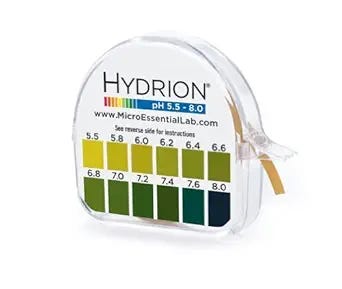“From Lactic Acid to Laughter: A Journey Through War, Cancer, and Terrain”
Fearfully Made, Acidically Tested: Terrain, Faith, and Cellular War
In previous posts and notes, I discussed the Warburg Effect, the metabolic reprogramming in which cancer cells preferentially rely on Glycolysis even in the presence of oxygen. Once triggered, this shift becomes locked in a phenomenon I call the Warburg Lock. In this state, key oncogenes are turned on, and tumor suppressor genes are silenced. I’ve also outlined natural compounds to help shut down this ancient glycolytic pathway that drives excessive lactate production.
This process accelerates rapidly in cancer cells, producing high levels of lactic acid, which acidifies the intracellular and extracellular environment.
Psalm 139:14
“I praise you because I am fearfully and wonderfully made; your works are wonderful, I know that full well.”
Like all cells, cancer cells are adaptive and intelligent. Under normal conditions, a cell that becomes too acidic initiates apoptosis, programmed cell death. But cancer cells resist this fate. They survive by reprogramming proton extrusion mechanisms, pumping hydrogen ions (H⁺) through upregulated transporters like MCTs and proton pumps, maintaining an alkaline interior while acidifying their surroundings.
I apologize for the density of the biochemistry in the above slide. It’s essential. When treating cancer, both doctor and patient must understand how cancer cells survive. This understanding is not academic; it’s central to healing. Clarity empowers action.
Let’s walk through it:
If we begin at the core, glucose is metabolized to pyruvate. In a healthy cell, pyruvate would typically enter the mitochondria, the red squiggly structure, to undergo oxidative phosphorylation. However, in cancer cells, due to damaged mitochondria and reprogrammed metabolism (the Warburg effect), pyruvate is diverted into lactate (lactic acid) instead.
This lactate buildup creates dangerous intracellular acidity, which should trigger cell death. But cancer cells are cunning; they adapt.
To survive, they pump out excess H⁺ ions (protons) through specialized membrane transporters:
MCT1 and MCT4 (monocarboxylate transporters),
NHE1 (sodium/hydrogen exchanger),
V-ATPase (vacuolar proton pump).
At the same time, to maintain internal stability, they import bicarbonate ions (HCO₃⁻) using the NBC transporter (sodium bicarbonate cotransporter), buffering their internal pH.
The result?
Intracellular pH stays deceptively alkaline, around 7.5, allowing survival and function.
Extracellular pH drops to around 5.8, creating a highly acidic tumor microenvironment.
This acidic terrain outside the cell promotes invasion, suppresses immunity, and blocks therapies.
Cancer survives because it manipulates its terrain, and understanding that terrain is how we begin to reclaim it.
This brings me back to my terrain.
Sympathetic Terrain
While in the camps in Malaysia, I entered a prolonged sympathetic overdrive, the classic fight-or-flight state. I chose to fight. I fought to protect my younger brother, Sonny. The physical toll of that prolonged stress was profound. I often wonder how I did not die from the acidic storm within me? The answer lies in one word: adaptation, like the cancer cell.
From Malaysia, we were relocated to Guam, but I remember very little, probably because I came down with Dengue fever. I don’t recall how long we stayed, but I remember one detail: the Marine physician who treated me. For the first time since April 30, 1975, I felt safe. Guam was under U.S. military control. I don’t know how long I stayed in Guam, and the island did not tip over from the incoming refugees. Thank you, God, that Representative Hank Johnson of Georgia was incorrect.
From Guam, we were sent to Camp Pendleton. The change was dramatic. We moved from tents and sanitation ditches into real military barracks with beds. Every night, the U.S. Marines played movies outdoors on a giant screen. Although it was safe, I remained internally acidic—still withdrawn, still guarding. Sonny and I stayed inside.
One evening, a U.S. Marine walked into the barracks and asked if we wanted to join the movie. For the first time, I felt something I hadn’t felt in a long time: trust. That night, he took Sonny and me to the grassy hill. We watched Bugs Bunny, The Three Stooges, Gilligan’s Island—and we laughed for what felt like the first time.
He gave us ice cream and said, “Want to come again tomorrow?” I looked at his boots—he was not wearing sandals, and they were clean, solid, and safe. I said yes, and he kept his promise.
When Terrain Changes, Biology Follows
No, this isn’t Sonny and me in the picture. But I found this photo of two Vietnamese boys sliding down the grassy hills at Camp Pendleton. That was us. We used cardboard to slide down those hills, laughing and living again. Once my terrain changed, my biology followed.
Back to Cancer
Cancer cells exhibit an inverted pH gradient—acidic on the outside (pH) and alkaline inside (pHi). This is mainly due to the Warburg effect: glucose is funneled into Glycolysis, producing excess lactate and acid. To protect their internal machinery, cancer cells upregulate MCTs, CAIX, and proton pumps to extrude acid.
Consequences of an Acidic Terrain:
Proliferation & Survival: Acidic pH prevents apoptosis, allowing cancer cells to thrive.
Invasion & Metastasis: Acidosis activates enzymes like MMPs, breaking down the extracellular matrix. (This is why we must monitor Galactin-3 )
Immune Evasion: Low pH impairs effector T-cells while promoting Tregs and Myeloid-Derived Suppressor Cells (MDSCs). These are a heterogeneous population of immature immune cells that are highly immunosuppressive and commonly found in cancer, chronic infections, and inflammatory conditions.
Therapy Resistance: Many chemotherapies are weak bases. In acidic pH, they become protonated and cannot penetrate the cell membrane effectively (a process known as ion trapping).
Therapeutic Insight
Tumor acidity is not just a byproduct—it’s a strategic survival mechanism for cancer. It blocks immune attack, enhances invasion, and sabotages therapy. By targeting acidity, we target cancer’s shield.
But what if we changed that terrain?
Clinical Terrain Therapy: The Evidence
One of the most compelling studies comes from Japan (PMCID: PMC8962782), where researchers treated patients with small-cell lung cancer using standard chemotherapy plus alkalization therapy and high-dose weekly vitamin C (IVC). The intervention included oral sodium bicarbonate, alkaline dietary support, and IVC. The treatment group's urinary pH was significantly higher (mean 7.32) than that of the control group (mean 6.44). Most importantly, overall survival in the intervention group was 44.2 months, compared to 17.7 months in the control group.
This study supports what I’ve witnessed in practice and spirit: When you clean the terrain, biochemically and emotionally, the body has a chance to heal.
The two tools we must have at home are the Glucose-Ketones Index and Urine pH strips.
I recommend checking it daily and trying to get a GK1 < 1. We are shutting down Glycolysis when our GK1 is <1. Buy some Baking Soda ( I recommend Bob’s Red Mill. It is mined from a natural deposit and is aluminum, gluten-free, and chemical-free). By checking your urine pH and aiming for 7.4, you are turning your terrain to a more alkaline status.
Conclusion: Cleaning the Terrain Is a Spiritual Act
Tumor acidity is not just a barrier but a fortress that cancer builds to protect itself. But fortresses can be softened, and terrain can be restored.
As I learned in the refugee camps, changing terrain saves lives.
In science. In spirit. In childhood. In cancer.
Let’s clean the terrain first.
Anthony Phan MD
https://pubmed.ncbi.nlm.nih.gov/36106097/ (Inverted pH Gradient in Tumors)
https://www.frontiersin.org/journals/oncology/articles/10.3389/fonc.2019.01143/full (Lactate in the Regulation of Tumor Microenvironment and Therapeutic Approaches)
https://www.mdpi.com/2227-9059/12/10/2197 (How Does Cancer Occur? How Should It Be Treated? Treatment from the Perspective of Alkalization Therapy Based on Science-Based Medicine)
https://www.frontiersin.org/journals/oncology/articles/10.3389/fonc.2022.968351/full (Metabolic Management of Microenvironment Acidity in Glioblastoma)
https://pubmed.ncbi.nlm.nih.gov/34078817/ (Increasing Tumor Extracellular pH by an Oral Alkalinizing Agent Improves Antitumor Responses of Anti-PD-1 Antibody: Implication of Relationships between Serum Bicarbonate Concentrations, Urinary pH, and Therapeutic Outcomes)
https://pmc.ncbi.nlm.nih.gov/articles/PMC8962782/ (Improved Chemotherapy Outcomes of Patients With Small-cell Lung Cancer Treated With Combined Alkalization Therapy and Intravenous Vitamin C)
https://www.mdpi.com/2072-6694/16/1/61 (Potential of Alkalization Therapy for the Management of Metastatic Pancreatic Cancer: A Retrospective Study)
https://pmc.ncbi.nlm.nih.gov/articles/PMC9364696/ (Meaning and Significance of ‘Alkalization Therapy for Cancer)
**Disclaimer: I write to learn. For the past 2 years, in my spare time, I have only read about Dr. Thomas Seyfried’s work and papers about cancer. Dr. Seyfried wrote over 200 papers. I have also read countless papers about cancer. I write for my brain to organize all of the data. I am not a physician to anyone on social media, except for the patients who are under my care and are following me to learn with me. Next, I plan to write about how to block the other half of cancer’s nutrition, Glutamine. At the Achilles’ heel of cancer is this pathway called HIF-1 (Hypoxia-Inducible Factor 1), a central survival switch in cancer, which I will discuss in future posts.










I really enjoy how you integrate your life with medical knowledge. Thank you Dr. Phan .
I once had a doctor tell me that not all acidic people get cancer, but all cancer patients are acidic.